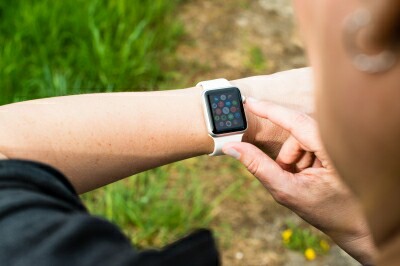Optimizing for the Wearable Web

Something monumental happened on April 21, and you may not have even noticed.
Google announced back in February that they would be adjusting their algorithm for searches conducted via mobile to give preference to mobile-friendly sites and they flipped the switch on April 21. Why is that so significant? Out of Fortune 500 companies alone, almost half don’t meet Google’s standards for being mobile-friendly. That means they’ll appear further down in search results and that can have a direct impact on profitability.
How does Google define mobile-friendly?According to Search Engine Watch, Google will use a combination of the following factors in their search engine result pages (SERPs):
- Whether the fonts scale for easy reading on smaller screens
- Whether touch elements (like buttons) are easy to use and spaced far enough apart to avoid interference
- Whether the page relies on Flash, which tends to not play well in mobile browsers
- For sites that have separate URLs for mobile, whether the desktop automatically redirects you to the right mobile URL
- How quickly pages load on mobile
If you’d like to know how your site measures up, try Google’s mobile-friendly test.
What does that mean for business?It’s too soon to know the financial impacts, but one thing is certain: You can’t just sit back and wait for this trend to pass, because it’s not going to. Estimates indicate that by 2018, more than one-third of consumers worldwide will be using mobile. Moreover, just in the first quarter of 2015, 28 percent of all online revenue came from mobile devices.
And there’s one more certainty: It’s not going to stop with mobile. Wearables are next, and businesses need to start thinking now about how they’ll adapt. Innovative companies are already developing best practices.
The Wearable WebWhat are some of the things you need to think about when preparing for the wearable web? From form to function, there are plenty of variables to consider.
1. Why will customers access your site, app or content from a watch or other wearable?
Before you can decide what content to put on your customer’s wearables, you have to understand what customers want from it. The answer is: Utility-based and transitory content, which means short bursts of useful content users can consume on the go. On a practical level, it means knowing how and why customers would access your content on the go. Will they be checking stock prices? Making purchases? Making a reservation? Killing time while waiting for their lunch date to show up? Or are they just trying to find their way to your brick-and-mortar location? They key to success on the watch/wearable medium is to know what users are trying to accomplish and to deliver it quickly and with minimal hassle.
2. How will customers access and navigate your content from a watch or other wearable?
As Google’s new algorithm highlights, tiny touch screens present navigation challenges. For example, how will you design your content so that users with big fingers don’t get frustrated by the amount of typing they may have to do? But don’t stop there. Assume that many wearables will, at the very least, have the option of navigating via voice. How will you work that into your design? Will users have to choose at the outset whether to navigate by voice or by touch, or will they have the chance to switch back and forth?
3. How much notification do users really want?
Since the value of wearables for marketing is almost incalculable, notifications are inevitably going to be a big part of design. How do you let consumers know that there’s a great deal waiting for them in the next aisle without driving them crazy via a beeping or vibrating watch? Customers can toss a phone in a purse or briefcase, but a wearable is harder to ignore. You’re going to need to keep notifications to a minimum and make them count.
4. What’s really important?
This is a corollary of the first two questions, but it deserves its own attention. When you’re designing for wearables, that’s not the time to try to impress users with your high-tech, video-fueled, cutting-edge design. Save that for your desktop site and think about what really makes sense for a small screen: Text that’s easy to read, buttons and menus that are far enough apart that it doesn’t take you three tries to tap the right one, a user-experience that’s wide rather than deep, so that users don’t have to navigate through multiple levels to find what they want.
If your site isn’t already mobile-friendly, you need to take action today -- especially if your competitors’ sites are already optimized for mobile. But don’t stop with what’s necessary now! Plan ahead and start thinking about how you’ll interact with customers when there’s an Apple Watch on every wrist.
For more marketing-related content on wearables and connected devices visit LearnedMedia on Tumblr.
The opinions and points of view expressed in this commentary are exclusively the views of the author and do not necessarily represent the views of MediaVillage.com management or associated bloggers.
Image courtesy of freedigitalphotos.net

